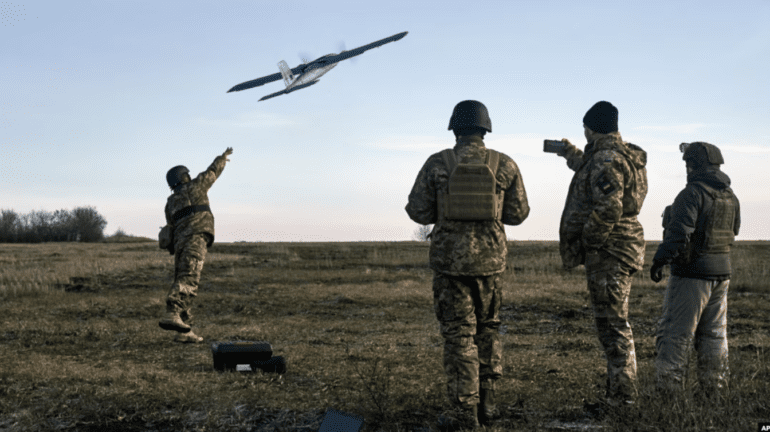- Ukrainian military integrates AI into drones for precise strikes on Russian targets.
- AI enhances navigation, aids in avoiding jamming, and ensures accuracy.
- Drones equipped with machine vision identify targets autonomously.
- Collaboration with allies enables coordinated strikes with unparalleled precision.
- Expert cautions that drone intelligence is still in its early stages.
Main AI News:
The Ukrainian military has embarked on a strategic initiative, harnessing the power of AI-driven drones to execute precision strikes within Russian territory. This groundbreaking advancement enables pinpoint accuracy in targeting specific facilities, heralding a new era in warfare tactics.
Sources intimately familiar with Ukraine’s drone program revealed the integration of rudimentary artificial intelligence into drone systems. This AI augmentation significantly enhances navigation capabilities and mitigates the risks posed by electronic jamming tactics.
According to a CNN insider, the incorporation of artificial intelligence facilitates accuracy even in the face of jamming interference. Each drone is equipped with a terminal computer fortified with satellite and terrain data, empowering it to execute pre-determined flight plans with unparalleled precision. Collaborative efforts with allied forces ensure meticulous coordination, culminating in strikes that hit targets with extraordinary accuracy.
Remarkably, the drones’ exceptional precision owes much to their advanced sensor technology. A phenomenon known as ‘machine vision,’ a subset of AI, equips these drones with the ability to identify geographical features and pinpoint targets autonomously. Noah Sylvia, a respected research analyst at the UK-based Royal United Services Institute, elucidated on this innovative capability, emphasizing its self-sufficiency devoid of satellite communication.
Chris Lincoln-Jones, a distinguished authority on drone warfare and artificial intelligence, underscored the nascent stage of autonomy exhibited by these unmanned aerial vehicles (UAVs). While acknowledging the unprecedented advancements, he cautioned against overstating the current level of “intelligence” within these drones, emphasizing the ongoing evolution of this transformative technology.
Exploiting the convergence of AI and drone warfare, Ukrainian forces are poised to redefine the paradigm of modern warfare, leveraging technology to assert precision and effectiveness in strategic operations. This symbiotic relationship between AI and military tactics underscores the relentless pursuit of innovation in the pursuit of national security objectives.
Conclusion:
The integration of AI into Ukrainian drones marks a significant advancement in precision warfare tactics. This innovation underscores the increasing reliance on technology to achieve strategic objectives in modern warfare. As AI-driven drones demonstrate unprecedented accuracy and autonomy, there emerges a potential shift in the market towards greater investment and development in AI-powered military technologies. Companies operating in the defense sector may find opportunities to capitalize on this trend by investing in research and development of AI-driven systems tailored for military applications.

